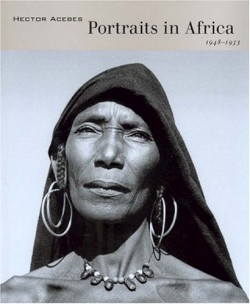Hector Acebes
Portraits in Africa 1943-1953
Normally, a photo might say a thousand words. But with these remarkable photos of Africa, that estimate must be raised considerably. Acebes, a Colombian with a decidedly international upbringing and spirit of adventure to match, journeyed throughout Africa in the late 1940s and early 1950s with a camera-and an eye for the realities missed by so many other photographers before him.
His subjects were the people, of all ages and social positions, from the most remote, primitive areas of the continent to the most metropolitan of cities. But his camera-and his perspective-caught something special. While other photographers used 35mm cameras, which they pointed like a gun at the subject, Acebes preferred a Rolleiflex, a camera he held at belt level, composing the shot by looking down. The photographer could then look up and make eye contact with the subject a second before releasing the shutter. The result captured that bit of personality and humanity so wanting in other photos of that era. Acebes explained that this method was less intimidating and created a personal relationship with the subject.
This coffee table-sized book features more than ninety graphic, black-and-white photographs by Acebes for the first time in this format. The architects of the book are Marquand, a book designer and producer and director of the Hector Acebes Archive, and Brielmaier, an art professor and curator specializing in African photography and art. Each provides an insightful chapter of text that sheds more light on the inner workings of this adventurer. These two contributors provide a disturbing observation regarding photos of Africa common to that day, notably, that most pictures were taken through racist eyes, sometimes overtly so. Most photographers made no attempt to depict anything but the most crude stereotypes of what white Europeans and American expected or wanted to see. Acebes was a glaring exception.
Sprinkled throughout the book are photos of Acebes himself. They tell their own story of the man as he evolves from a youthful army officer to a rugged-looking explorer on the vast, barren landscape of the wilds of an Africa that seem to be disappearing.
Reviewed by
Karl Kunkel
Disclosure: This article is not an endorsement, but a review. The publisher of this book provided free copies of the book to have their book reviewed by a professional reviewer. No fee was paid by the publisher for this review. Foreword Reviews only recommends books that we love. Foreword Magazine, Inc. is disclosing this in accordance with the Federal Trade Commission’s 16 CFR, Part 255.

